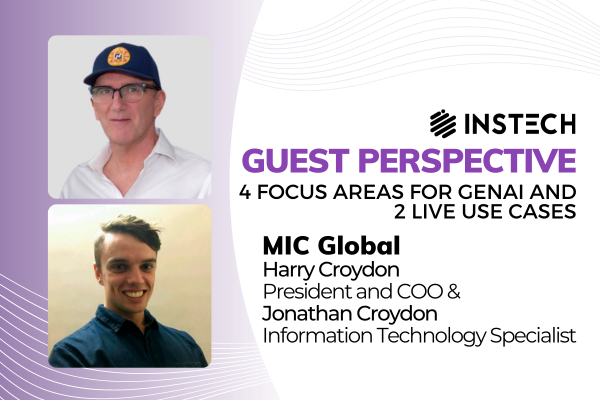Guest Perspective: MIC Global
So far, generative AI’s effect on the wider insurance industry has not been substantial, but it is only a matter of time (and a short period of time). MIC Global is using generative AI to drive operational support and better customer service today. In this article, we set out recommended immediate areas of focus for the insurance industry and two specific examples of how MIC Global is using generative AI already.
The internet was invented in 1983 and the World Wide Web was introduced in 1991. 30 years on, every insurance company has a website, although many still operate on legacy systems from the 1990s and only some sell and quote policies online. With generative AI, we are at a similar stage to where the internet was in the early 1990s. Insurance companies will have to change their ways of working to adjust, but some will embrace the technology more than others.
In MIC’s view, there are four immediate areas of focus for the insurance industry: reprioritisation, communication, security and outsourcing.
- Reprioritisation: Insurance companies need to reprioritise quickly to incorporate generative AI into their short- and long-term priorities and strategy.
- Communication: Large language models (LLMs) allow insurers to achieve automated, human-like conversations with customers for the first time, enabling a new generation of chatbots better than what was available previously.
- Security: LLMs can turn a novice criminal into a sophisticated attacker; companies need to rethink data protection, digital safety and security.
- The risks of outsourcing: If you give an AI company your data, business processes and logic, you risk losing your intellectual property. Licensing AI is totally different to outsourcing infrastructure development or licensing policy management systems.
The team at MIC Global is encouraged to use tools such as ChatGPT and Bard. Our technology team uses CoPilot. All these are helpful for productivity, but we have gone a step further by integrating generative AI in these ways:
- Our customer service chatbot can answer customer questions in multiple languages 24/7 and is authorised to perform certain actions to support customers with their requests.
- MIC uses a low-code platform for policy management, claims and CRM, which we also provide to insurers, third-party administrators, brokers and MGAs. We have used our existing system specifications, user guides and training courses to train a chatbot that helps new users. Currently it can answer questions and provide advice and instructions. We are testing a capability that would allow it to interact with the platform, building and configuring new workflows for users when prompted.
MIC Global sees itself as a technology company that sells insurance, not an insurance company that uses technology. We are planning to transform the company with AI. We will build on what we have created today and integrate AI into new areas to enrich what we do and improve operational efficiency.
– Harry Croydon, President and COO, and Jonathan Croydon, Information Technology Specialist, MIC Global
To learn more about the insurance use cases of generative AI, sign up to InsTech’s Generative AI in Practice newsletter. The monthly newsletter helps you track how insurance organisations are using generative AI today, the core use cases and emerging risks.


